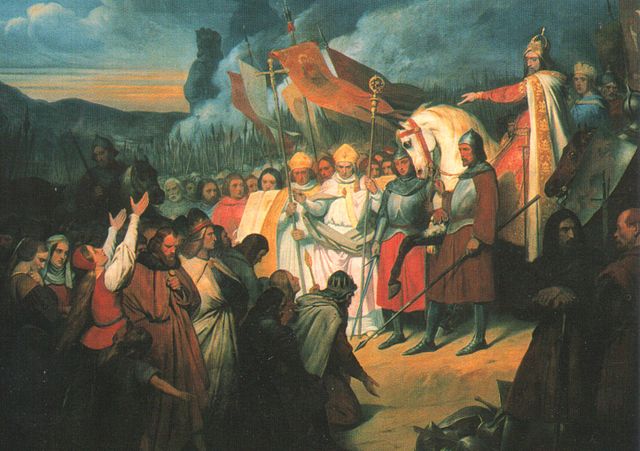How many kings can say that their name was emblazoned across the map?
The most successful ruler ever seen in Dark Age Europe, Charlemagne – “Charles the Great” – ruled the Franks from 768 to 814 AD. Building upon an already substantial empire, he expanded the Frankish territory as far as northern Spain in the west, Bavaria in the east, Italy in the south and the German coast in the north. It was an empire so large and powerful that it is remembered by a name derived from Charles’s own.
This was the Carolingian Empire – Charles’s Empire.
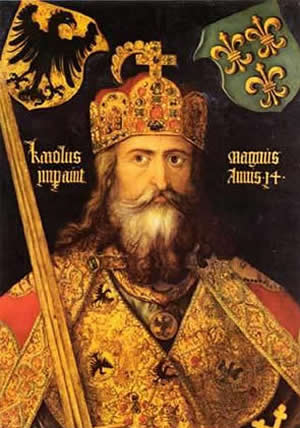
How the Franks Fought
The Frankish way of fighting was the predecessor of the armoured knights that would dominate medieval warfare. Heavily armed and armoured by the standards of their day, an aristocratic warrior elite was at the heart of the army. Images from the time show them wearing chainmail and rounded helmets probably made out of iron, bronze and leather. They carried swords and lances.
Stirrups were not introduced in the Frankish empire until sometime during Charlemagne’s reign. As a result, lances could not be used in the way they were by later knights, carried underarm for a high impact charge that could penetrate strong armour. Instead, lances were thrown or used as striking weapons.
The Frankish cavalry was still an intimidating battlefield force. But Charlemagne did not fight a large number of pitched battles, and this was not where the real value of his cavalry army lay. It was their strategic manoeuvrability, and the fact that he could move his army great distances at speed on horseback, that gave the Frankish king his edge.
Alongside these elite warriors were massed ranks of poorer men armed with spears and shields. Even the cart drivers of the armies carried bows and arrows to contribute to the fighting power of the force.

Organising the Forces
The Carolingian army could be raised at any time, allowing Charlemagne to defend his empire against raids from neighbours. When he was assembling a great army of conquest, he usually did this around Easter. An account from the Revised Annals of the Kingdom of the Franks explains that this time was chosen as plenty of fodder was available for the horses, making the most of the army’s greatest asset.
Estimates of the size of these armies range from 5,000 men to 35,000, not counting the attendants these vassals brought with them.
Unlike his predecessors and opponents, Charlemagne did not rely on raiding to exert his influence. Raiding could bring wealth and status, but not consolidated control of territory.
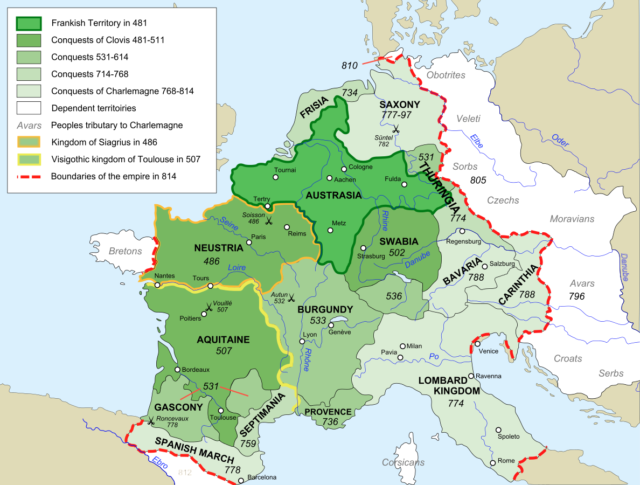
Source: Sémhur/ CC BY-SA 3.0/ Wikipedia
For that, he created a more organised system of conquest. Fortresses were built in the places he invaded, for example, those at Syburg, Eresburg, and Lippespringe in Saxony. By leaving garrisons in these forts, Charlemagne could continue to control the land after he left.
Men came to fight for Charlemagne because of the wealth and power that could be gained. Land, slaves, and treasure could all be taken by the conquerors. In 796, Duke Eric of Friuli sent him a hoard of treasure and he distributed a large part of it among his men.
But the financial gains of raiding were no use in motivating men to hold fortified positions and consolidate Frankish power. For that, Charlemagne ordered free men to serve in these garrisons, stating how they should come equipped. Those who could not afford the equipment individually had to band together to provide an armed man from among them.
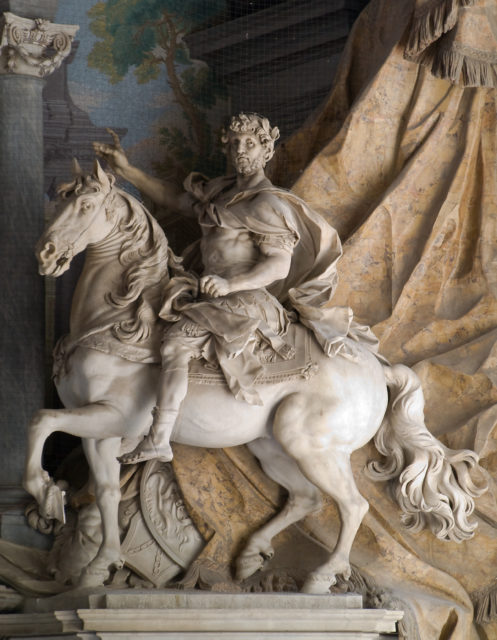
Carolingian Strategy
Charlemagne’s strategy was built around the substantial army at his command. Because he had so many men and so many resources to supply them with he could do things his opponents could not. By gathering three months of food and six months of clothes in advance, he was able to keep his armies in the field throughout the year, not just during the traditional campaigning season of late spring through to fall.
Large troop numbers also allowed Charlemagne to split his army in two, catching his enemies in pincer movements. In 773, this let him outmanoeuvre the Lombards, getting past their attempts to block passes through the Alps. In 794, his pincer movement caught the Saxons, forcing them to give up on mustering their army. On at least five occasions from 774 to 799, dividing his army let him pillage a wider area, causing more damage to his opponents and gathering more loot with which to reward his men.
All of this was made possible through engineering support. Aside from the fortresses built in conquered lands, Charlemagne focused on bridges. Counts in Frankia had to keep bridges in their territory passable, and more were built by armies on campaign, including two on the Elbe in 789, both with forts defending their ends.
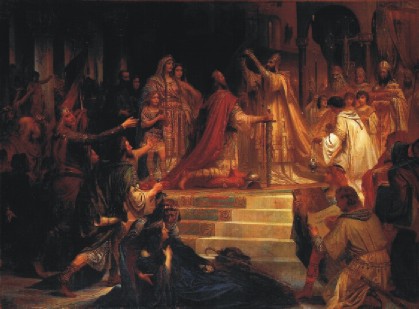
The Unimportance of Battles
So little emphasis was placed on battles that they are barely described in the chronicles of the time. Even when the descriptions were expanded after Charlemagne’s death, they did not present stories of bold victory by Frankish knights against their barbarian foes.
Instead, we see battlefield embarrassment. At Rocensvalles in 778, a baggage train was ambushed by Basques who escaped when the main army turned on them. An army led by Charlemagne’s relative Count Theodoric was slaughtered by Saxons in 782, apparently due to poor discipline.
These defeats did little to hamper Charlemagne’s success, however. Contrary to the way historians have sometimes depicted them, the Franks were not successful due to their great battlefield prowess. Instead, they were steady campaigners with large resources and a strategically wise leader. Charlemagne’s dominance in logistics and strategy meant that he could afford not just to avoid the battlefield but to lose there and yet still win the war.
